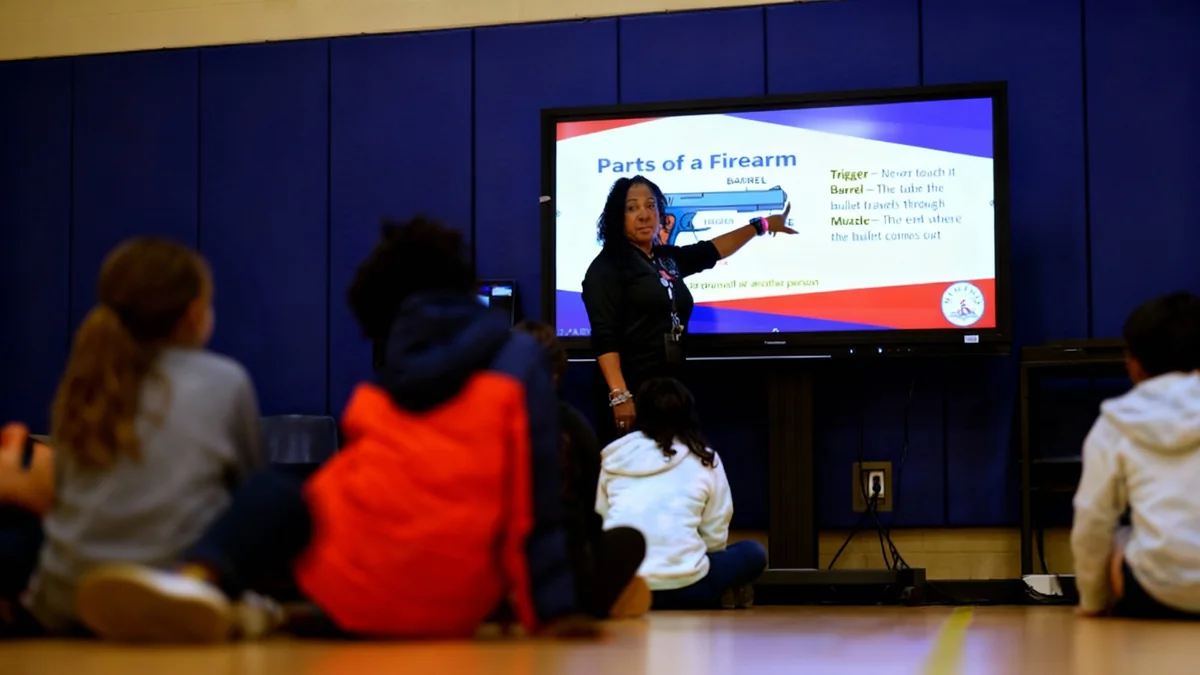A new school year is bringing a different kind of lesson to classrooms in a handful of states across the country. Public schools in Arkansas, Tennessee, and Utah are now required by law to provide students, some as young as five, with instruction on firearm safety.
The new mandates place schools at the center of a national conversation about gun violence and safety, aiming to teach children what to do if they encounter a firearm and the importance of secure storage at home.
Key Takeaways
- Arkansas, Tennessee, and Utah have enacted laws requiring gun safety education in public schools.
- The instruction is for students in elementary, middle, and high school.
- Lessons focus on what to do if a child finds a gun and the principles of safe firearm storage.
- Utah's law includes a provision for parents to opt their children out of the lessons.
- Similar legislation has been considered in at least five other states.
A New Curriculum Requirement
The laws passed in Arkansas, Tennessee, and Utah represent a new approach to addressing gun safety, shifting a portion of the educational responsibility into the public school system. The legislation aims to equip students with critical knowledge in an effort to prevent accidental shootings and promote responsible behavior around firearms.
While the core message is consistent, implementation details vary. In Utah, the law explicitly allows parents or legal guardians to request their child be excused from the instruction, a feature not present in the Arkansas and Tennessee laws. This reflects differing state-level approaches to parental oversight in education.
The legislative trend is not limited to these three states. Lawmakers in at least five other states have introduced similar proposals, indicating a growing movement to integrate firearm safety into standard school curriculums. However, the idea has not been universally accepted; a comparable bill in Arizona was vetoed by the state's governor.
What Students Are Learning in the Classroom
The content of these new lessons is designed to be age-appropriate. For younger elementary students, the instruction is straightforward: if you see a gun, stop, don't touch it, run away, and tell a grown-up. The methods used to convey this message can be creative and engaging.
In Tennessee, for example, lesson plans may incorporate a variety of tools to capture students' attention. These can include:
- Informational videos with music and animation
- Interactive games and quizzes
- Stickers and colorful handouts
- Illustrations, including one showing a firearm made of building blocks to connect with a young audience
For older students in middle and high school, the curriculum can delve into more detail, including explanations of how different types of firearms work and the legal and safety principles of proper gun storage in a home environment.
The Reality of Youth Exposure to Firearms
Many children in the United States grow up in environments where firearms are present. The goal of these school-based programs is to provide a standardized safety message that reaches children regardless of their home situation, potentially reducing the risk of accidental injury or death.
A Response to a Documented Need
Educators in states implementing the new curriculum report that the lessons are highly relevant to their students' lives. The prevalence of firearms in many communities means that children are likely to encounter them at some point, whether in their own home or at a friend's house.
At Berclair Elementary School in Memphis, Tennessee, the need for this education was starkly illustrated in one classroom. A health and physical education instructor, Tammie Chapman, was leading a lesson with 16 fifth-graders.
"I asked them how many had seen a real gun," Chapman said. "Nearly all of them raised their hands."
This informal poll highlights the direct exposure many young people have to firearms. Supporters of the new laws argue that this reality makes proactive safety education not just beneficial, but essential.
Chapman believes her experience confirms the value of the new state requirement. "It just shows you how much a class like this is needed," she noted, emphasizing the importance of providing children with a clear, safe plan of action.
The Broader Debate
The introduction of gun safety courses into public schools is part of a larger, ongoing debate about the most effective ways to prevent gun violence and accidents involving children. Proponents argue that education is a critical, non-partisan tool that can save lives by teaching safe behaviors.
They often compare it to other safety programs taught in schools, such as fire safety or stranger danger, which are widely accepted as part of a child's basic education. The focus, they say, is on safety and prevention, not on promoting or discouraging gun ownership.
However, the measures are not without critics. Some argue that this type of education is the responsibility of parents, not schools. Others express concern that the lessons might inadvertently pique a child's curiosity about firearms. The legislative debates in various states reflect these differing viewpoints, shaping the final laws and whether provisions like parental opt-outs are included.
As Arkansas, Tennessee, and Utah move forward with this new educational mandate, other states will be watching closely to observe its implementation and potential impact on student safety.





